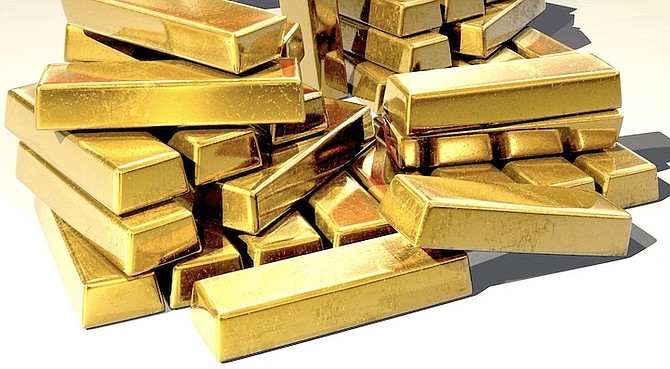ACTIVTRADES WEEKLY
By CARLO ALBERTO DE CASA
www.activtrades.bs
Investor demand for bullion may have dimmed recently but gold’s everlasting appeal endures.
After gold’s record breaking 2020 which saw the price smash through $2,000 an ounce to its highest ever level, it is perhaps little surprise that the precious metal has had a more muted first quarter in 2021. But has gold’s appeal permanently waned with the coronavirus pandemic seemingly starting to come under control and with new cryptocurrencies dominating headlines, or are there still reasons to back the oldest currency of them all?
First, let’s reflect on the factors that sparked last year’s price surge. As coronavirus spread around the globe, it triggered the biggest health and economic crisis in a generation, with investors rushing to safe haven assets such as gold amid a stock market crash. Then as the potential economic fallout of the lockdowns and other restrictions became apparent, central banks around the world were forced to print almost infinite amounts of money, further boosting demand for gold and its finite amount of supply.
Now the health crisis looks to be receding as vaccines are being rolled out globally, investors have flooded back into stocks and equities with the bulk of indices across the world now back to pre-pandemic levels. Yet while gold’s appeal as a safe haven asset has dwindled in recent months, its other major investor characteristic as a store of value continues to shine, with no signs of central banks turning off the money taps any time soon.
Central banks are also showing signs their appetite for buying physical gold as part of their currency reserves is returning after a quiet 2020. The Polish Central Bank has announced plans to buy at least 100 tons in the coming years, while Russia, the largest buyer of recent times, is warming again to renewed purchases.
While a resurgent stock market clearly presents a significant headwind to gold, the economic recovery remains very nascent and fragile and it would only take a few negative news items or data releases to knock the current optimism. Therefore, a correction of five to ten percent is entirely plausible, with gold likely to be one of the winners to a “risk-off” environment.
Assuming the economic recovery does continue as unabated as seems to have been priced in by investors, there are concerns about the impact this would have on inflation. The correlation between gold, the ultimate store of value, and inflation, the silent destroyer of value, isn’t particularly clear. On the one hand, rising interest rates to counter inflation are bearish for gold as its lack of return means its appeal diminishes in a high interest environment. On the other hand, given one of the primary causes of the inflation is the huge amount of quantitative easing by central banks, then that circles back to gold and its appeal as a finite commodity.
So, where does that leave the outlook for gold? While a return to the record highs of 2020 may be asking too much, the medium-term outlook looks cautiously optimistic and a worthwhile hedge to counteract any further jitters on stock markets while offering investors a tangible asset at a time of almost unlimited liquidity on currency markets.






Comments
Use the comment form below to begin a discussion about this content.
Sign in to comment
Or login with:
OpenID